Previous article tells about modern Rhodope train features, also presenting timetable and prices. Now we would like to describe the historical background of narrow gauge railway and tell the story of its construction.
World War I
The main reason for building Rhodope railway became the lack of high-speed transport routes, connected to the distant areas. During the First World War many lands were actually cut off from the rest of Bulgaria, becoming an easy target for the enemies, who was strove to capture a new territory. The area of Rhodope Mountains was especially insecure.
In 1915, after detailed study of the landscape, the government of Bulgaria decided to start railways construction, straight to the heart of Rhodopes. The river valley of Mesta and Eli-dere (nowadays Chepinskaya river) became a basis for building process. The road supposed to connect Saranbey city (nowadays Septemvri) and Nevrokop (Gotse Delchev), stopping in many of the mountain settlements.
Rhodope narrow gauge on the map of Bulgaria
Dangerous task
Following the plan, it turned out, that one part of the railway should pass through a dangerous gorge. Several engineers refused to work with the project. Problem seemed to be impossible to solve, but after some time, a young engineer, Stoyan Mitov, who just graduate from German university, take this task. According to the fact, that the railway still works in its original appearance, it can be said that Stoyan Mitov was a quite good engineer.
The overall plan was completed in 1920 and construction process finally starts. Saranbey city (Septemvri) — Varvara village section was built first. The railway reached Ladzhene village (future Velingrad city) in the next 5 years. The work was carried out in very difficult conditions: there was no special technical equipment, tunnels were laid with a help of explosions, picks and shovels. Moreover, building process was blocked by winter colds.
Monarch, eight and two sixes
The first train in a history of Rhodope Narrow Gauge departed at 11 a.m, 2nd of August in 1926. The railway carriage set off from Saranbey (Septemvri), stopping at Varvara, Banite, Dorkovo, Bakardzhi Khan, Dolen, Drenov Dol and Chukata stations. It was arrived to the final stop Ladzhene (Velingrad) after 3 hours 22 minutes. Next section Ladzhene (Velingrad) — Chepino-Banya was opened in 1927. A year later a new part of railway from Varvara to Pazardzhik was completed and put to work.
Nine years later, in 1937, Chepino-Banya — Yakoruda section was opened. This part turned out to be the most difficult. Railway have to be laid through the narrow gorge. The passage was so tight, that nowadays it's even possible to touch the rocks from the train's window. There are more than 15 tunnels on the way, as well.
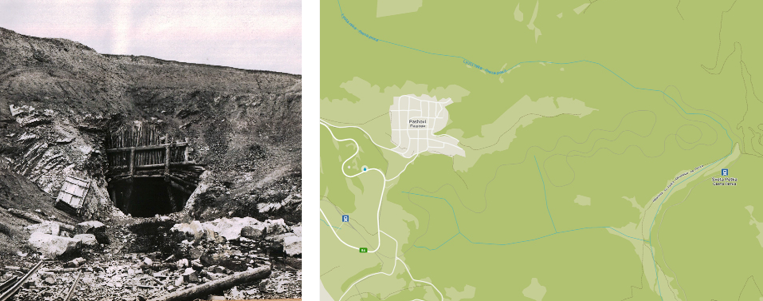

Problematic part between Sveta Petka and Avramovo stations
Between Svetka Petka and Avramovo stations there was a sharp rise: railway had to go up to 15 meters. Architects decided to lay the route in a form of «8-shape». Further, after Avramovo station, the line makes two spiral, which can be easily noticed on a map. The railway descends in a form of two sixes «66», after Cherna Mesta station. By the way, Cerna Mesta is translated as a «dark place», what is pretty creepy.
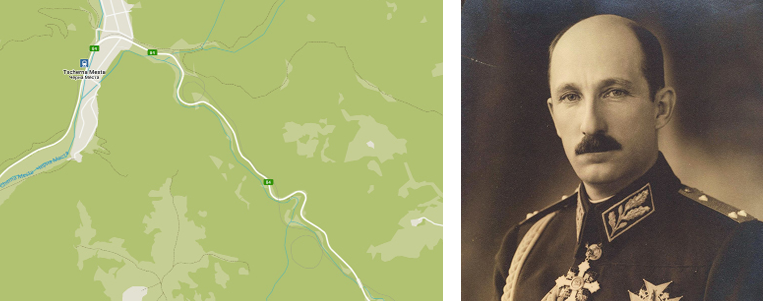

Problematic part near Cherna Mesta station. Tsar Boris III
Belitsa station was opened on 30 of July 1939, by this time the total length of the finished railway section was 101 kilometers. Tsar Boris III attended the opening and even rode in the cab of locomotive. This event remained in a memory of the locals for a long time — two miracles together, a train and a monarch.
Section Belitsa–Razlog–Bansko was built during the next 4 years. The opening took place in 3 of March 1943. Same year, 9th of December, a 6-km section from Bansko to Dobrinishte was put to work. Unfortunately, the construction process stopped here forever. The railway line never reached the Neurocop (Gotse Delchev), as originally planned. The Bansko–Dobrinishte section was built with the help of volunteers, who desperately wished the railway line passed through their villages. Everyone understood the importance of railway communication. The Rhodope narrow gauge revived the regions and developed new industrial centers.
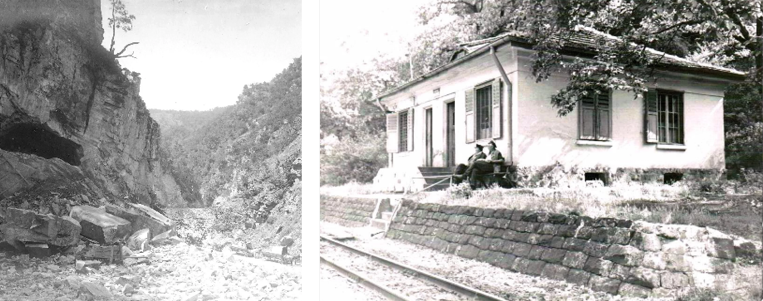
Marco Nikolov station, 1976 (destroyed now)
The road of life
Interestingly, that narrow gauge line remains the only public transport for the hundreds of mountain locals, especially in Velingrad — Avramovo area. Most of the villagers are still earns a living with a help of Rhodope railway.
Although the railway construction stoped at Dobrinishte village, for many years it was the main transport line for the passengers and goods along the Mesta River and further to Gotse Delchev. All industrial supplies were delivered on narrow gauge: firstly to Dobrinishte by train and further down the road by trucks. However, Rhodope railway contributed to the development of Gotse Delchev region, as was planned at the beginning of the construction.
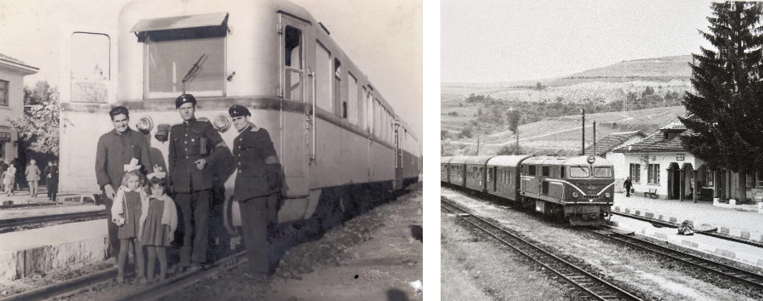
Who paid the bill?
The official history claims that building of the Rhodope Narrow Gauge Railway was fully financed by the government of Bulgaria. However, it could be supposed that construction of a narrow gauge were paid by Nazi Reich, according to the fact, that Bulgaria was fighting on German side during in the First and the Second World War. The Germans in turn, were interested in the building a new transport route on their «future territory».
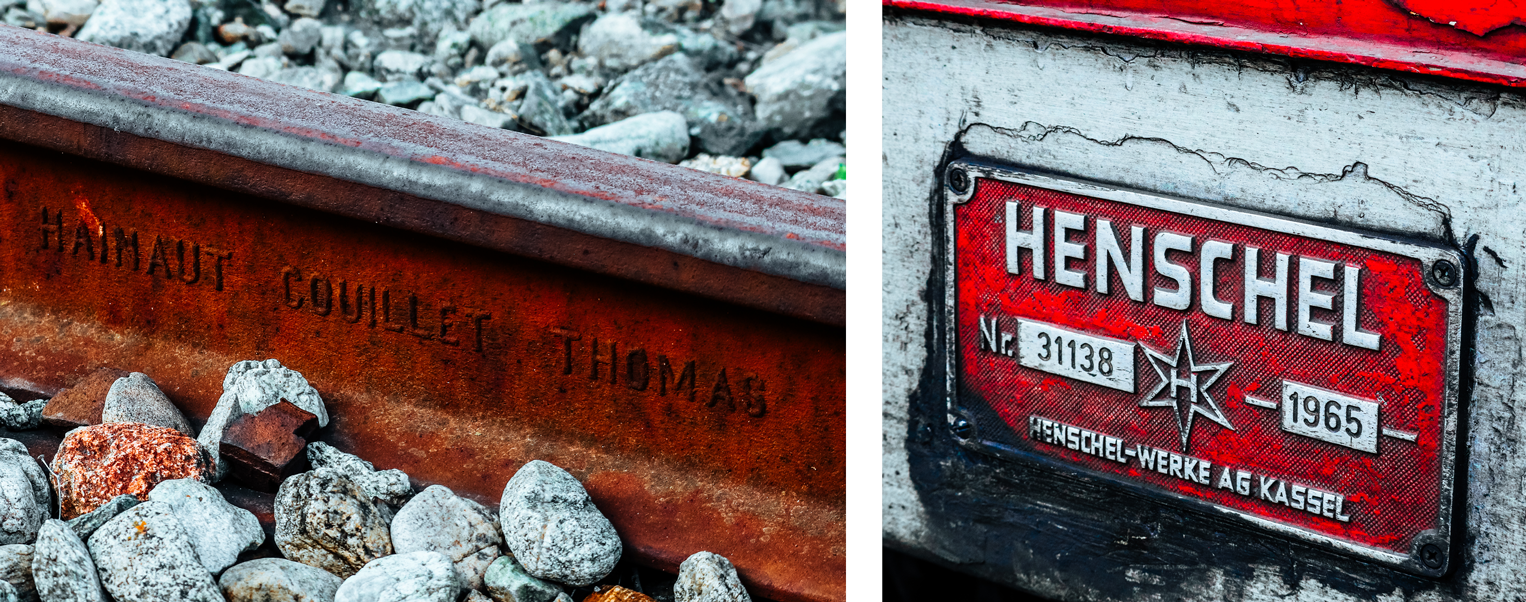
German-made rails and locomotive of Rhodope train, Bansko station
It is also had to be noticed that Rhodope railway building process started with the beginning of the First World War, what was undoubtedly wasteful. When the Nazi Reich was defeated, the construction of the narrow gauge was stopped, while the railway didn't reach Gotse Delchev — its final destination. In addition, the rails and wagons for the Rhodope narrow gauge railway were fully produced in Germany. Those who doubt this theory can come to any narrow gauge station and see for them self.
